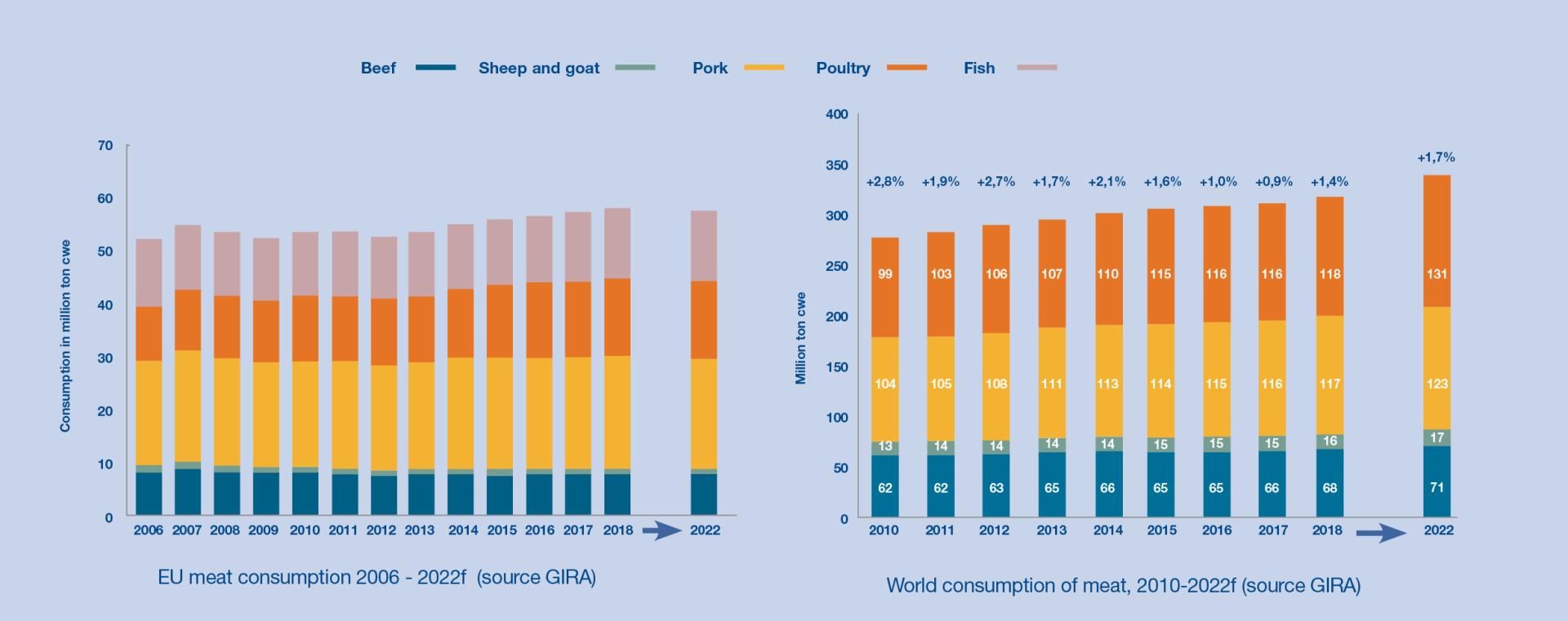EUROPE
The total meat consumption in Europe is rising. Pork and poultry collectively represent 80% of the total meat consumption and their share is growing. It is expected that meat consumption will still be rising slightly in 2018, mainly owing to poultry, and that it will then start to stagnate. This increase is primarily due to better economic conditions, population growth (affected by immigration), increasing supply and falling prices. However, it is expected that growth will stagnate within a few years, because the market will be saturated and there is a mounting concern around meat and health, with the exception of poultry and fish, whose consumption will continue to rise moderately.
Relative consumption
The consumption of pork compared to total meat consumption is declining in Europe. In 2017, pork represented just over 47% of the total meat consumption in this continent, while that was still 51% in 2000. The relative price of pork is also falling after a short flare-up in 2017, which is also reflected in the price of pork. For beef, the downwards trend, after a big drop in recent years, will continue to be about 18% of the total consumption. The relative price however rose by around 170%.
WORLD
World meat consumption increased slightly by 0.9% compared to 2016, reaching 313 million tons CWE. On a global level, the increase in poultry consumption was only a modest 0.4% due to supply problems and health issues concerning HPAI in China. On the other hand, the consumption of pork increased by 1%, with widespread growth and few drops. Beef consumption in turn increased the most by 1.7%, especially in the US and China. For 2018 it is expected that global meat consumption will increase further, again with beef at the lead, followed by poultry and pork. However, China ensures that the total meat consumption growth remains inhibited, both in 2017 and in 2018.
